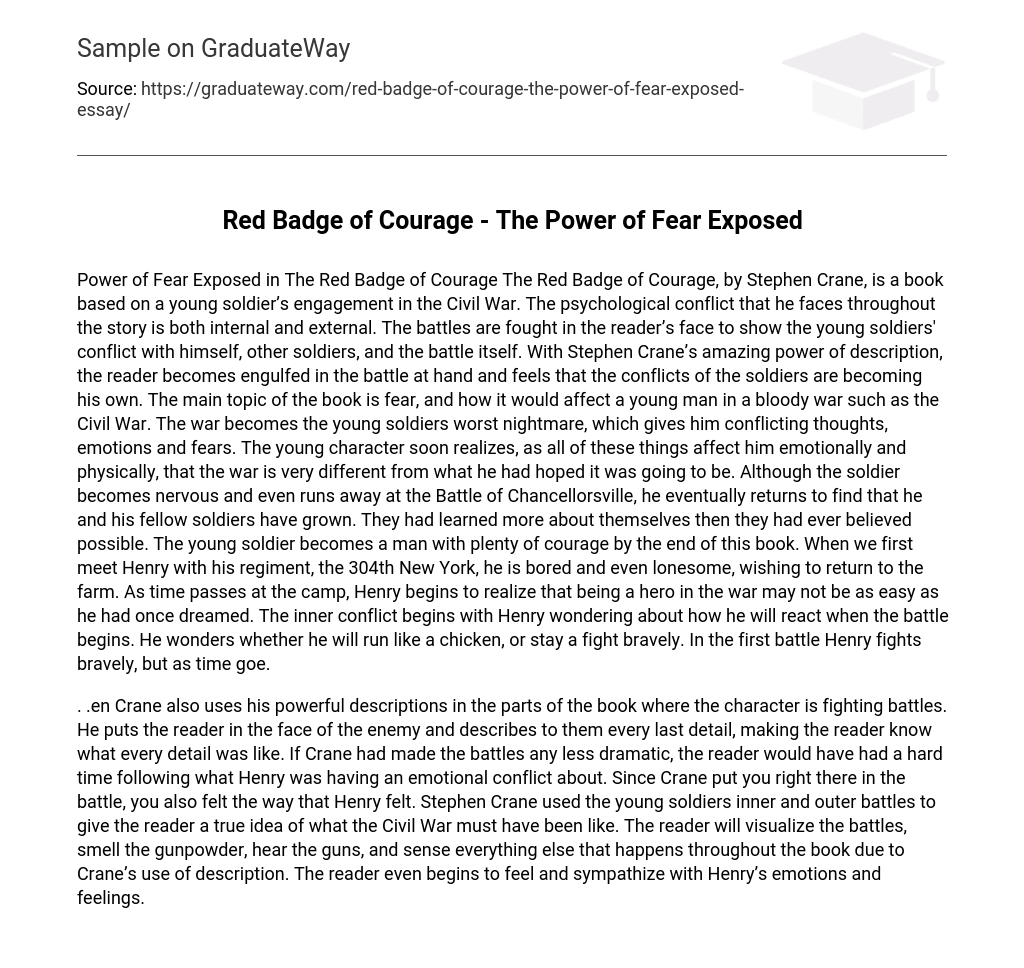Power of Fear Exposed in The Red Badge of Courage The Red Badge of Courage, by Stephen Crane, is a book based on a young soldier’s engagement in the Civil War. The psychological conflict that he faces throughout the story is both internal and external. The battles are fought in the reader’s face to show the young soldiers’ conflict with himself, other soldiers, and the battle itself. With Stephen Crane’s amazing power of description, the reader becomes engulfed in the battle at hand and feels that the conflicts of the soldiers are becoming his own. The main topic of the book is fear, and how it would affect a young man in a bloody war such as the Civil War. The war becomes the young soldiers worst nightmare, which gives him conflicting thoughts, emotions and fears. The young character soon realizes, as all of these things affect him emotionally and physically, that the war is very different from what he had hoped it was going to be. Although the soldier becomes nervous and even runs away at the Battle of Chancellorsville, he eventually returns to find that he and his fellow soldiers have grown. They had learned more about themselves then they had ever believed possible. The young soldier becomes a man with plenty of courage by the end of this book. When we first meet Henry with his regiment, the 304th New York, he is bored and even lonesome, wishing to return to the farm. As time passes at the camp, Henry begins to realize that being a hero in the war may not be as easy as he had once dreamed. The inner conflict begins with Henry wondering about how he will react when the battle begins. He wonders whether he will run like a chicken, or stay a fight bravely. In the first battle Henry fights bravely, but as time goe.
. .en Crane also uses his powerful descriptions in the parts of the book where the character is fighting battles. He puts the reader in the face of the enemy and describes to them every last detail, making the reader know what every detail was like. If Crane had made the battles any less dramatic, the reader would have had a hard time following what Henry was having an emotional conflict about. Since Crane put you right there in the battle, you also felt the way that Henry felt. Stephen Crane used the young soldiers inner and outer battles to give the reader a true idea of what the Civil War must have been like. The reader will visualize the battles, smell the gunpowder, hear the guns, and sense everything else that happens throughout the book due to Crane’s use of description. The reader even begins to feel and sympathize with Henry’s emotions and feelings.





